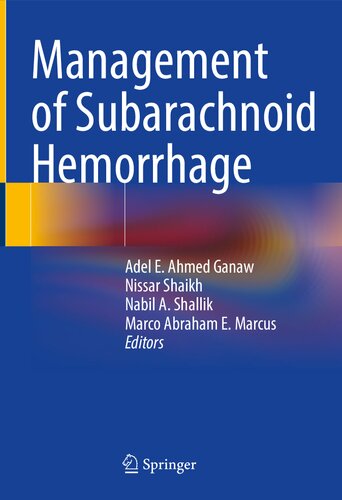

Most ebook files are in PDF format, so you can easily read them using various software such as Foxit Reader or directly on the Google Chrome browser.
Some ebook files are released by publishers in other formats such as .awz, .mobi, .epub, .fb2, etc. You may need to install specific software to read these formats on mobile/PC, such as Calibre.
Please read the tutorial at this link: https://ebookbell.com/faq
We offer FREE conversion to the popular formats you request; however, this may take some time. Therefore, right after payment, please email us, and we will try to provide the service as quickly as possible.
For some exceptional file formats or broken links (if any), please refrain from opening any disputes. Instead, email us first, and we will try to assist within a maximum of 6 hours.
EbookBell Team

5.0
50 reviewsThis book focuses on subarachnoid hemorrhage (SAH), describing in detail the neurophysiology, anatomy, epidemiology, grading, anesthesia management, coiling and interventional treatment of this dangerous disease. Written by leading international experts, it highlights the state-of-the-art techniques for the diagnosis and treatment (non-surgical and surgical) of SAH and the clinical variations. It also examines the reliability of the new techniques versus the standard clinical methods to predict problems related to SAH and its recent diagnosis and management.
The book starts with a brief discussion of the epidemiology of SAH, cerebral circulation, anatomy of brain blood vessels and neurophysiology related to this fatal disease. Then, in the following chapters it covers grading of subarachnoid hemorrhage, anesthesia management of SAH, treatment, subarachnoid hemorrhage coiling and radiological intervention. Lastly, it explores surgical treatment of intracranial aneurysms in more detail, and addresses complications, critical care management and headache in SAH, traumatic SAH and prognosis.
Featuring numerous images, tables, schema, illustrations and videos, the book is intended for junior and senior anesthesiologists, neuroscientists, intervention radiologists, intensivists and neurosurgeons.